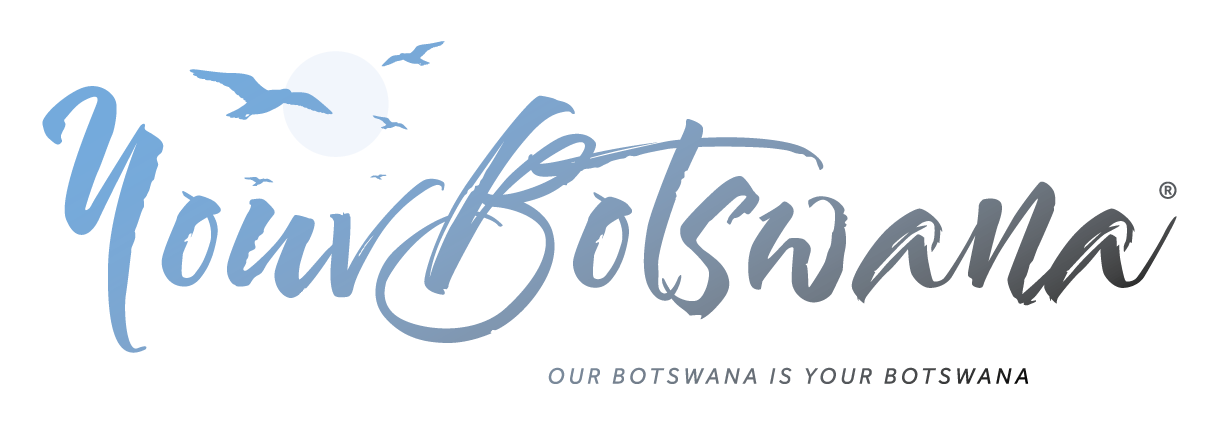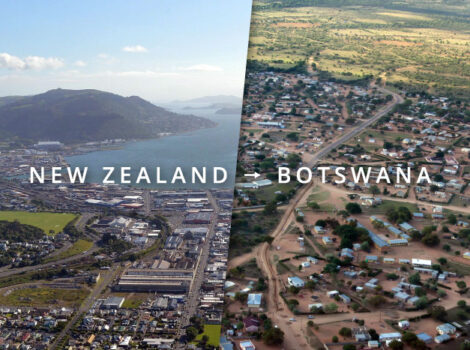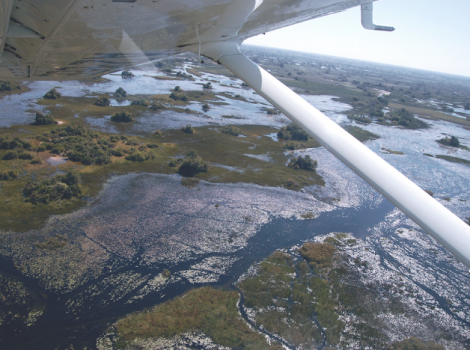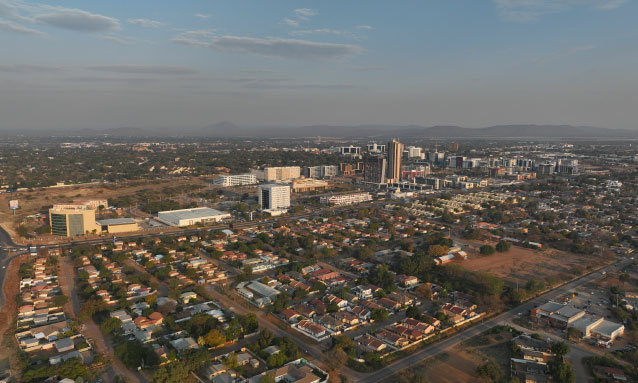
7 April 2025
Botswana has lost some of its economic lustre. Consider these figures: from independence in 1966 to the early 2000s, the economy grew at over 7% per year. Botswana was one of only 13 countries globally, and the only one in Africa, to sustain such high growth during that period.
However, in the 2000s, annual growth slowed to an average of 5.1%, and since 2009, it has further declined to an average of 3%. The economy even contracted by 3.1% in 2024. While it is normal for growth to slow as countries become wealthier, the pace of Botswana’s decline is concerning given its structural weaknesses and higher poverty and inequality rates compared to other middle-income countries.
Botswana appears to be caught in the “middle-income trap”. Despite managing its diamond revenue well historically, the country now faces two significant challenges. First, the economy remains minimally diversified, with diamonds still accounting for over 70% of total exports. Second, financial, productive, human, and natural resources are being used less efficiently, with productivity declining by an average of 1.4 % per year over the past decade (Figure 1).
Figure 1: Botswana’s economy has become less efficient over the past decade in sharp contrast with more successful economies
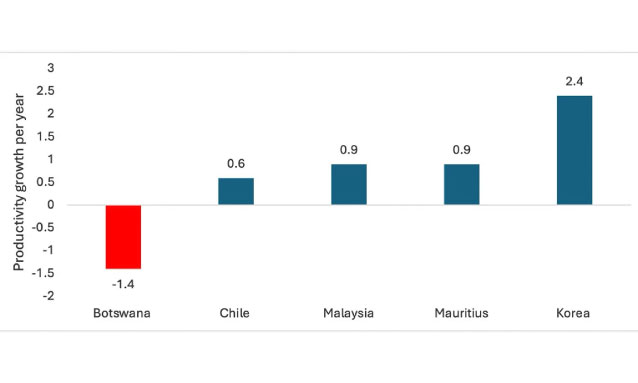
To escape the middle-income trap, Botswana needs higher and sustained productivity growth, at least 1-2% per year, as demonstrated by successful economies. Since transformative growth is unlikely to come from the diamond sector alone, policymakers must identify new drivers of inclusive growth.
In a recent report “In Search of New Drivers of Inclusive Growth” (2024), the World Bank identified four key priorities that can form a new growth strategy for Botswana.
In light of the recent economic downturn and the growing fiscal deficit, which peaked at nearly 10% of GDP in 2024, the immediate priority is to bolster macroeconomic stability while enhancing public sector performance. Effective policymaking has decelerated in recent years, with dwindling fiscal buffers from government’s savings, and a rise in public debt.
Although the sharp decline in diamond revenue is a significant factor behind this deterioration, the surge in SACU revenue, which almost doubled between 2022 and 2024, was not prudently managed.
This has led to a disproportionate increase in government spending. The government should work on reducing the deficit and incentivise institutions and civil servants to deliver with greater efficiency. There will need to be more transparent to achieve this, and a focus on implementation and coordination, commitment and discipline in public administration, and the adoption of digital tools for improved financial management, including procurement.
The second priority is to support productive firms and businesses to grow. The new government has committed to working to “unburden businesses” and “attract patient investors”. Doing this will require some rethinking of the state’s dominance, including by state-owned enterprises, in the economy to promote innovation and job creation.
Inspiration can be drawn from East Asian countries like China and Vietnam, which opened strategic segments of their economies to private operators and attracted Foreign Direct Investments (FDI).
Botswana needs not only FDI inflows to import technologies and capacity, but also dynamic domestic small enterprises, through responsible deregulation and financing support, to diversify its economy and navigate global economic changes.
The third priority is to build a labour force with enhanced and market-responsive skills. Botswana’s human capital base is on par with the Sub-Saharan African average, which does not correspond to its income level. The government must achieve better outcomes from its investments in education, health, and social protection, which could also be used to address high inequality. Public-private partnerships could deliver more efficient services, especially for technical and vocational training, and mobilise additional resources for education and health that will be needed to accommodate a growing and ageing population.
Finally, as a landlocked country with a small population, the fourth priority for Botswana is to expand markets through better connectivity, both physical and digital.
Leveraging private investment for transport and digital infrastructure is encouraging, but policies to reduce access costs are equally important, including through competition and regional agreements.
These efforts will reduce mobility costs, encourage trade within the country and across borders, and provide new opportunities for firms and workers.
With the goodwill generated from the recent election and peaceful transition of power, the new government is well-positioned to deliver a “New Botswana”. The World Bank is ready to support the authorities’ aspiration for inclusive growth anchored on productivity and job creation. Implementing the four drivers of inclusive growth proposed above will not be easy. Reforms could create tensions, and positive impacts may be slow to materialise. However, the country cannot afford to wait for the diamond market to return to its former glory. Now is the time for Botswana to regain its economic sparkle by adopting and implementing a new inclusive growth strategy.
Source: https://rb.gy/qgxnat
